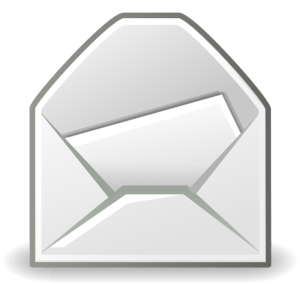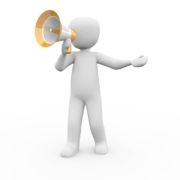Email marketing: This copywriter’s playbook on getting emails noticed, read and actioned
Does your email marketing attract attention to the last word?
I’ve been writing quite a few email marketing campaigns recently, campaigns that have ranged from directly promoting services to reaching out for referral business. And I’m always on the look out for great email marketing.
I thought it would be useful to share some of the copywriting techniques I apply to write successful email marketing – and by successful, I mean noticed, opened, read and responded to.
I’m letting you see my “copywriter’s playbook” here:
but I’m hoping it helps you write better email marketing for your business, or your clients.
Goodness knows our email inboxes could do with fewer crappy email marketing messages!
It starts with the subject
You’ve probably read more than a few posts about writing email subject lines. If not, you should. A copywriter can often spend more time on a campaign headline than the copy itself and your email subject line needs the same attention.
I like subject lines that are clear and explanatory. I’m all for creating some intrigue but who is going to open an email with a mysterious subject when they could open an email from a customer placing an order. No one.
[Super email marketing tip] Brackets can help your email stand out, especially when you put them around attention-grabbing words
[Special Offer]
[Exclusive]
[Announcement]
[Newsletter]
Mailchimp found that time-sensitive words like Urgent, Breaking, Important and Alert also boosted email marketing open rates. Coupled with some brackets, you’ve got yourself a pop-up neon sign that says OPEN ME!
Avoid words like Free, Help, Percent Off, SALE, and Reminder. Using the word “Free” will get your email straight into the spam folder but the others will affect your open rates (in a bad way).
Make the first words count
So your email has been opened. That’s worth a small parade in itself but then you need to get your reader to the end. To do that, you need to make every word matter. Those first few words are critical.
Greet them like a real person
Make sure your greeting is personal. I don’t just mean the rather old-fashioned, “Dear Sarah”. When I write email marketing campaigns I like to use greetings like “Hi” and “Hey” because that’s how I’d start a real conversation.
That’s a really important point so I’ll say it again.
Your email marketing should feel like a real conversation, not a pitch presentation.
Let them know it won’t take long
Using questions in your copywriting can help you draw attention to a frustration you solve and it works for email marketing.
[Super email marketing tip] Start your email with the words, “Quick question:”.
This is a great opener for a few reasons. Most email providers will display the From field, the email Subject line and the first few words of the email. When your reader sees that all you have is a quick question, your email is more likely to be opened and actioned to get it out of the way.
You also get to present a frustration you go on to solve.
Some examples:
Quick question: When was the last time your hot water system was serviced?
Quick question: Do you accept awesome guest posts on your blog?
Quick question: How much money do you waste on channels you never watch?
From a person not a business
Who doesn’t have an email problem? We all get too many emails. We get emails related to our business, we subscribe to interesting blogs, we chat to friends and family, we get notifications from the tools we use and we get spam emails when our names are sold as part of a list.
It’s just too much!
So we create a process of prioritising emails and emails that are obviously marketing messages get moved to the bottom of the email pile.
I always recommend clients put their own name in the email From field – not their business name. Because who do you open emails from first – a friend or a business?
One way to stop your email marketing being ignored is to be awesome, relevant and valuable but also be personal – putting your name in the From field.
Draw them back in
Postscripts (PS.) were traditionally used in old-fashioned snail mail, when people actually wrote letters to each other (by hand!) The PS. would follow the signature and allowed people to add some news they’d forgotten to include in the main body.
You might think that adding a PS. to the end of an email doesn’t make sense as you can simply go back and edit the main body before you send. But the old PS. is used as an effective marketing technique in direct mail and can be just as useful in email marketing.
Why? The eye will naturally linger on a PS. so it’s a great place to reinforce your message, create some urgency or offer some extra value.
You can also add a testimonial or simply invite contact – but make sure the last words they read are on brand and memorable.
[Super email marketing tip] Rearrange some of your email marketing copy to include a memorable PS.
PS. Don’t forget this offer ends at midnight on 02/04/2014 so don’t dilly dally!
PS. Did I mention that we’re including a free copy of our book on email marketing cheats with the first 20 orders? Hit Reply now and see if that’s you!
PS. I understand this is a big decision to make so if we can help you with more information or answer questions you have, we’d love to. Just give us a call on 1300 AMAZEBALLS.
Which tricks will you apply?
Once you collect email addresses you need to use them wisely. From a newsletter to a sales campaign, email marketing is THE best way to keep in touch with your customers.
So which of these tips will you include in your next email marketing? Do you have other techniques you always use?
Share them with me in the comments!
The Copy Detective
 About the author: Belinda Weaver
About the author: Belinda Weaver
Belinda is an seo copywriter and marketing copywriter who confidently walks the line between writing effective copy and creating an engaging brand personality. You don’t have to choose between them! Oh and she’s also The Copy Detective.



